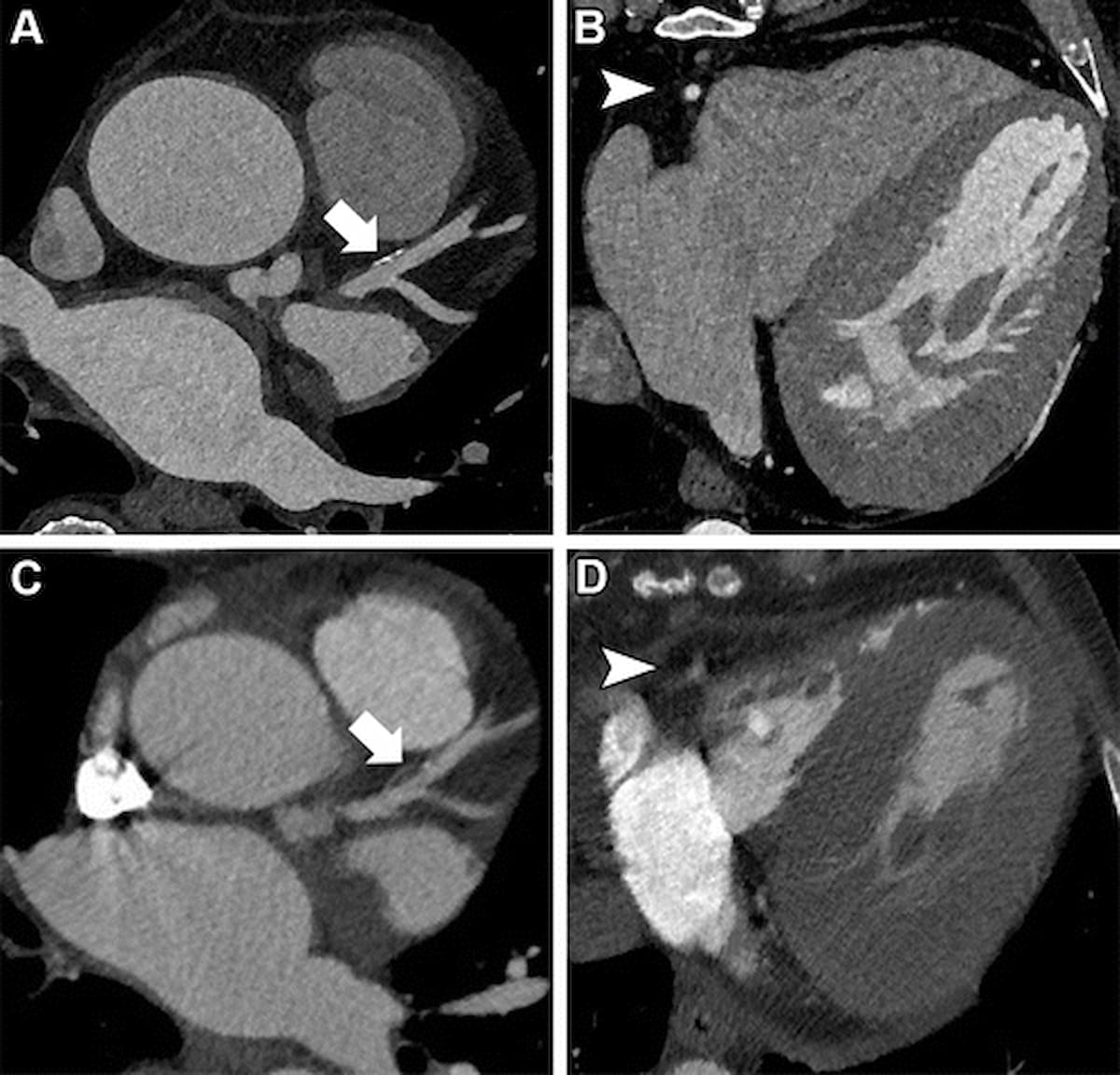Study Examines Photon-Counting CT for CAD Detection in Patients Having TAVR Procedures
In a study cohort of patients undergoing pre-operative workup for transcatheter aortic valve replacement (TAVR), researchers found the use of photon-counting CT for ultra-high resolution coronary CT angiography had a 96 percent sensitivity rate and an 84 percent specificity rate for the detection of coronary artery disease (CAD).
Whether there are blooming artifacts from coronary stents or abnormal cardiac rhythm, achieving an accurate read of coronary arteries on conventional computed tomography (CT) can be challenging for patients slated to undergo transcatheter aortic valve replacement (TAVR).
However, emerging research suggests that dual-source photon counting CT (PCCT) could have an impact in detecting coronary artery disease (CAD) in this high-risk population.
For the prospective study, recently published in Radiology, researchers examined the use of ultra-high resolution (UHR) coronary CT angiography (CCTA) via a dual-source photon-counting CT scanner for 68 people (mean age of 81) who were undergoing pre-operative workup for TAVR. The study cohort had a 35 percent prevalence of CAD and 22 percent had prior stent placement, according to the study.
For the detection of CAD, the researchers noted a 93 percent area under the receiver operating characteristic curve (AUC), a 96 percent sensitivity rate, an 84 percent specificity rate and an 88 percent accuracy rate.
“Our results showed that UHR CCTA provided excellent image quality … and high diagnostic accuracy. UHR CCTA maintained high accuracy, even in patients with severe calcification,” wrote study co-author Tobias Krauss, M.D., who is affiliated with the Department of Diagnostic and Interventional Radiology at the University of Freiburg in Freiburg im Breisgau, Germany, and colleagues.
In a comparison of ultra-high resolution coronary CT angiography obtained with a dual-energy photon-counting CT scanner (images A and B) versus cardiac CT images from a dual-source energy-integrated CT scanner, the study authors noted key differences in the sharpness of the right coronary artery and the detection of plaque in the left anterior descending artery. (Images courtesy of Radiology.)

(Editor’s note: For related content, see “Study Says CT Scan is More Predictive than Genetic Risk Factors for Coronary Heart Disease Risk” and “Five Takeaways from New Consensus Recommendations for CT Imaging and Reporting in Patients with CAD.”)
For patients with 50 percent or higher stenosis, the researchers found that UHR CCTA had participant-based, vessel-based, and segment-based accuracy rates of 88 percent, 91 percent, and 95 percent accuracy rates respectively. The study authors also noted 82 percent, 89 percent and 94 percent accuracy rates for participant-based analysis, vessel-based analysis, and segment-based analysis, respectively, for patients with 70 percent of greater stenosis.
In an accompanying editorial, Michelle C. Williams, MBChB, Ph.D., and David E. Newby, DM, Ph.D., said a key observation in the study was the recognition that reliance on the CCTA and PCCT findings could have prevented the use of invasive coronary angiography in 54 percent of the study cohort.
“This could benefit patients by providing a single imaging test for the simultaneous assessment of the coronary arteries and aortic valve, thereby reducing the need for unnecessary invasive investigations and helping diminish health care costs,” wrote Dr. Williams, a senior clinical lecturer and radiology consultant at the University of Edinburgh and member of the Board of Directors of the Society for Cardiovascular Computed Tomography, and Dr. Newby, the British Heart Foundation Duke of Edinburgh chair of cardiology at the University of Edinburgh.
Beyond the limitations of a small sample size, the study authors acknowledged the elimination of spectral information from photon-counting CT during the performance of UHR CCTA, which prohibited a comparison of UHR CT and spectral CT. There was also no comparison of photon-counting UHR CCTA and energy-integrating detector CT for diagnostic accuracy, according to the researchers.
What is the Best Use of AI in CT Lung Cancer Screening?
April 18th 2025In comparison to radiologist assessment, the use of AI to pre-screen patients with low-dose CT lung cancer screening provided a 12 percent reduction in mean interpretation time with a slight increase in specificity and a slight decrease in the recall rate, according to new research.
The Reading Room: Racial and Ethnic Minorities, Cancer Screenings, and COVID-19
November 3rd 2020In this podcast episode, Dr. Shalom Kalnicki, from Montefiore and Albert Einstein College of Medicine, discusses the disparities minority patients face with cancer screenings and what can be done to increase access during the pandemic.
Can CT-Based AI Radiomics Enhance Prediction of Recurrence-Free Survival for Non-Metastatic ccRCC?
April 14th 2025In comparison to a model based on clinicopathological risk factors, a CT radiomics-based machine learning model offered greater than a 10 percent higher AUC for predicting five-year recurrence-free survival in patients with non-metastatic clear cell renal cell carcinoma (ccRCC).
Could Lymph Node Distribution Patterns on CT Improve Staging for Colon Cancer?
April 11th 2025For patients with microsatellite instability-high colon cancer, distribution-based clinical lymph node staging (dCN) with computed tomography (CT) offered nearly double the accuracy rate of clinical lymph node staging in a recent study.